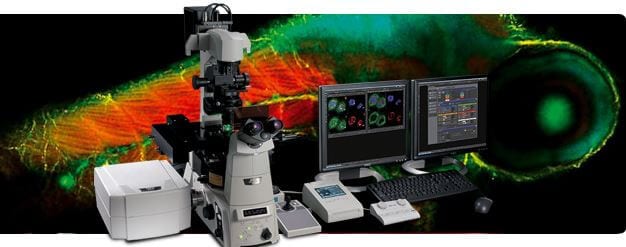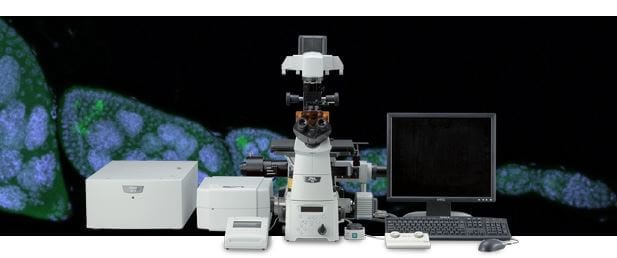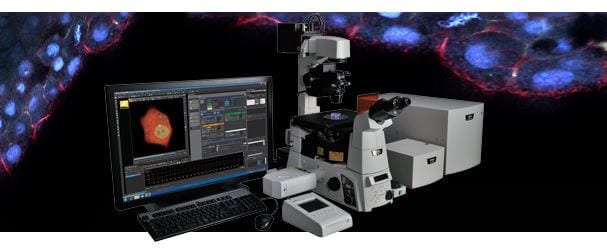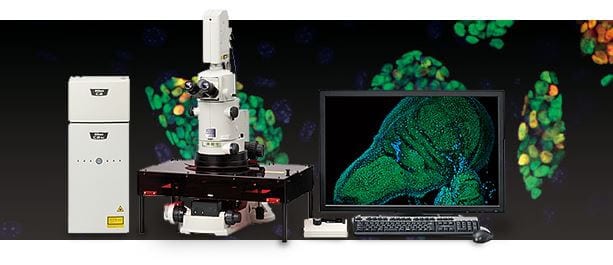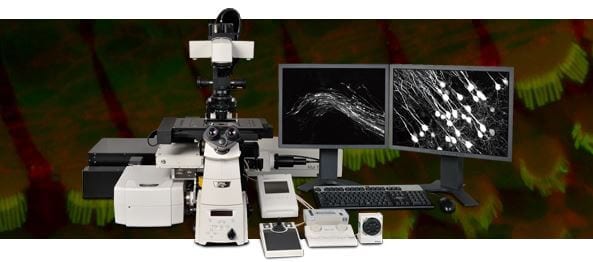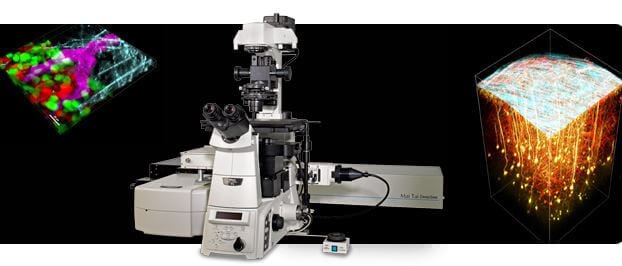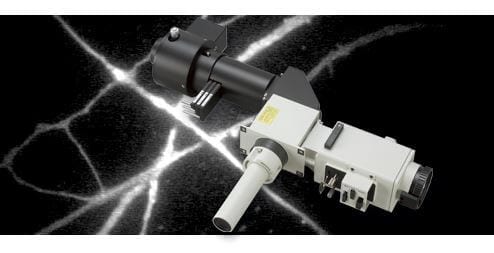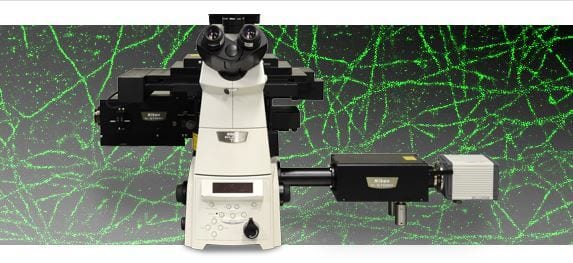All-new super-resolution microscope featuring acquisition speeds ten times faster than conventional N-STORM systems.
Nikon’s Next Generation N-STORM Super-Resolution Microscope System.
With ten times faster acquisition speeds compared to conventional N-STORM, N-STORM 4.0 enables imaging of live cells with nanoscale resolution.
Nikon has established a leading position in the field of super resolution microscopy since the release of N-STORM in 2010. STORM, or Stochastic Optical Reconstruction Microscopy is a super-resolution technique developed by Dr. Xiaowei Zhuang, a Howard Hughes Investigator at Harvard University. The technology localizes temporally isolated fluorescent molecules to reconstruct images with nanoscale resolution (~10 times greater resolution compared to conventional light microscopy). N-STORM 4.0 is the next step in the evolution of STORM imaging, enabling STORM imaging of dynamic processes in live cells.
N-STORM 4.0 utilizes an improved laser excitation design and a sCMOS camera that dramatically improves acquisition rates.
There is a rapidly growing interest in super-resolution microscopy as evidenced by the recent 2014 Nobel Prize in Chemistry awarded to the field of super-resolution microscopy. There is also an increasing need to expand these techniques to broader applications like live-cell imaging. Recent studies show that localization-based super-resolution imaging of live cells can provide unprecedented insights into the nanoscale dynamics of intracellular structures such as focal adhesions1, transferrin clusters in clathrin-coated pits2, and organelles including mitochondria and endoplasmic reticulum3.
N-STORM 4.0 utilizes an improved laser excitation design and a sCMOS camera to improve acquisition rates from minutes to seconds while gathering incredibly high molecule counts. In addition, the new system offers expanded flexibility in the imaging field of view, allowing users to choose the best suited mode for their application, whether it be high-speed imaging of live cells or gathering large fields of view of fixed cells.
N-STORMv4-camera
N-STORM 4.0 utilizes an improved laser excitation design and a sCMOS camera that dramatically improves acquisition rates.
1 Shroff, H. et al., 2008, Nature Methods, 5 (5), p417-423.
2 Jones, S.A. et al., 2011, Nature Methods, 8 (6), p499-505.
3 Shim, S-H. et al., 2012, Proc. Natl. Acad. Sci., 109, p13978-13983

